Tim Shal
Newbie
Hello everyone,
I just acquired a nice but rather beat up accordion. I'm trying to understand how badly it's damaged and I would like to learn how to fix the most basic issues on accordions. Sometimes I would have a rather small problem with some of my accordions (I own 3 of them) and I cannot bring them to the shop as I don't have accordion shops in my area. Any kind of reference for materials such as books, videos, etc. would be appreciated. I'm also posting the pictures of my accordion I'm planning to fix. Bellows seem to be in very bad shape, with multiple holes and a glue job in the middle, they are the opposite of tight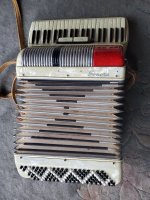

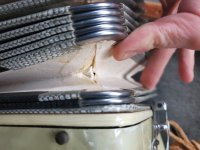

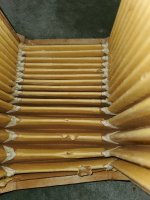
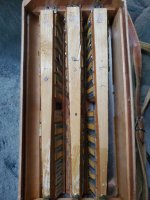


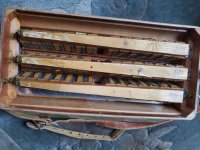

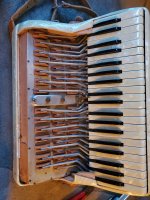
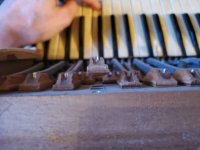 . I assume that I would need to buy new bellows. I have no idea where to go for that. Also, the reed leathers need to be replaced for most of the bass reeds. Also, some of the reeds are missing from the keyboard side. However, it plays all the notes and even seems to be in tune most of the time. The keyboard makes lots of clicking noises when I try to play, so I assume that the pads on the levers also might need a replacement.
. I assume that I would need to buy new bellows. I have no idea where to go for that. Also, the reed leathers need to be replaced for most of the bass reeds. Also, some of the reeds are missing from the keyboard side. However, it plays all the notes and even seems to be in tune most of the time. The keyboard makes lots of clicking noises when I try to play, so I assume that the pads on the levers also might need a replacement.
Thank you in advance for your help on this matter!
I just acquired a nice but rather beat up accordion. I'm trying to understand how badly it's damaged and I would like to learn how to fix the most basic issues on accordions. Sometimes I would have a rather small problem with some of my accordions (I own 3 of them) and I cannot bring them to the shop as I don't have accordion shops in my area. Any kind of reference for materials such as books, videos, etc. would be appreciated. I'm also posting the pictures of my accordion I'm planning to fix. Bellows seem to be in very bad shape, with multiple holes and a glue job in the middle, they are the opposite of tight











 . I assume that I would need to buy new bellows. I have no idea where to go for that. Also, the reed leathers need to be replaced for most of the bass reeds. Also, some of the reeds are missing from the keyboard side. However, it plays all the notes and even seems to be in tune most of the time. The keyboard makes lots of clicking noises when I try to play, so I assume that the pads on the levers also might need a replacement.
. I assume that I would need to buy new bellows. I have no idea where to go for that. Also, the reed leathers need to be replaced for most of the bass reeds. Also, some of the reeds are missing from the keyboard side. However, it plays all the notes and even seems to be in tune most of the time. The keyboard makes lots of clicking noises when I try to play, so I assume that the pads on the levers also might need a replacement.Thank you in advance for your help on this matter!
